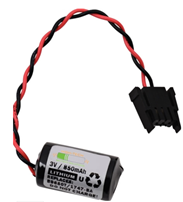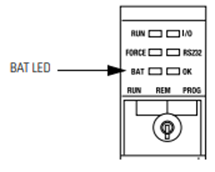
PLC Checkpoints for Maintaining Your Automation System
Josh Reed| 16 November 2022
A PLC or programmable logic controller is the “brain” for any automatic application. The PLC program is what provides and gives signals to any automatic system.
Quite simply, without the “brain” the application wouldn’t work; therefore, it is of upmost importance to make sure that it is taken care of and maintained. It needs to be stored in its recommended environment and preventative maintenance (PM) should be completed as recommended.
Why? PM or preventative maintenance is the practice of performing manufacturer’s recommended maintenance functions like cleaning, lubrication, adjustments and minor repairs on a regularly scheduled timeframe. These scheduled activities allow technicians to routinely monitor the equipment. This approach is estimated to have a 12 to 18 percent cost savings over reactive maintenance (the practice of running a piece of equipment until it fails) and increases the equipment life cycle.
Key PLC Maintenance Details
Identifying the Right Battery

The PLC is powered by its recommended power supply voltage 24Vdc/120Vac and it has a battery backup. This battery is extremely important for it retains the PLC program, PLC configuration, and set points.
If the power is removed to the PLC, the battery will supply power to the EPROM (erasable programmable read-only memory).
If both power and the battery were to be removed, the PLC would lose all the information and essentially going back to the factory state.
Compactlogix and Controllogix PLC are a different style of PLC and use a different style of battery. In some cases, some PLC models will use a different battery part number. It’s important, before purchasing a replacement batter to thoroughly research the appropriate PLC battery replacement. For reference either order the same part number of what is currently being used or, if it is unknown, research the PLC catalog for a specific part number.
Quick Checks and Backups
A battery could last up to 5-10 years depending on the environment the PLC is in; however, it is recommended to replace this battery every 2-3 years. On the Allen Bradley PLC, for example, a controller status indicator can be located on the front – labeled “BAT.” If BAT is “off” this indicates the battery supports memory. If the BAT features a steady red light this means the battery is not installed or 95 percent discharged and should be replaced.
If an HMI is available, going the extra step of having the PLC fault code (10 or 11) programmed to be displayed on the HMI can be a fantastic feature for quick checks. Once programmed, the HMI can show that the battery fault is on or needs to be replaced.
It’s a good idea to develop routine practice to evaluate existing PLCs when in the field and to ask if existing PLC programs are saved on a storage device or desktop. A single battery check could save a customer hundreds or thousands of dollars of downtime and re-programming of the existing equipment if a program is not saved.
Perform Maintenance Safely
Replacing the battery isn’t like changing out the batteries to your everyday kids toy. This must be completed with having the power off to avoid an electrical arc potentially causing an explosion. Arc flashes are a serious encounter and can cause severe damages. Proper precautions must be taken when working inside a panel where the PLC is usually mounted. To ensure the utmost safety, ensure you are working with an expert well-versed with PLC controls.
Bastian Solutions strives to create reliable systems that improve our customer's operations. Whether you need preventative maintenance, replacement parts or repairs we're here to help. Support can be reached to replace the battery to ensure this is completed with accuracy and done safely.
Josh is a Field Application Engineer based in Toledo, OH. He received his degree in Electrical Engineering from The University of Toledo. Prior to sales he worked as an Electrical/ Controls Engineer where he implemented many small and large material handling solutions. Working as a solutions integrator this assisted him in gaining his 10 years of knowledge in electrical troubleshooting, programming and system design.
Comments
No comments have been posted to this Blog Post
Leave a Reply
Your email address will not be published.
Comment
Thank you for your comment.